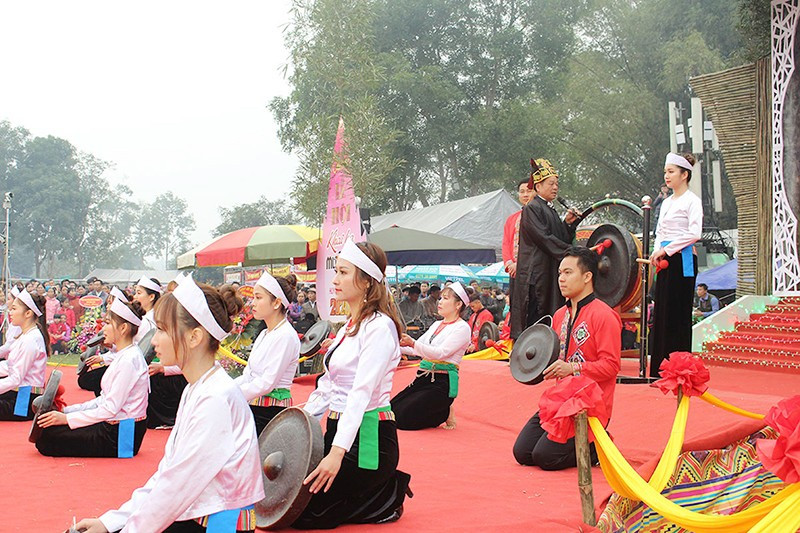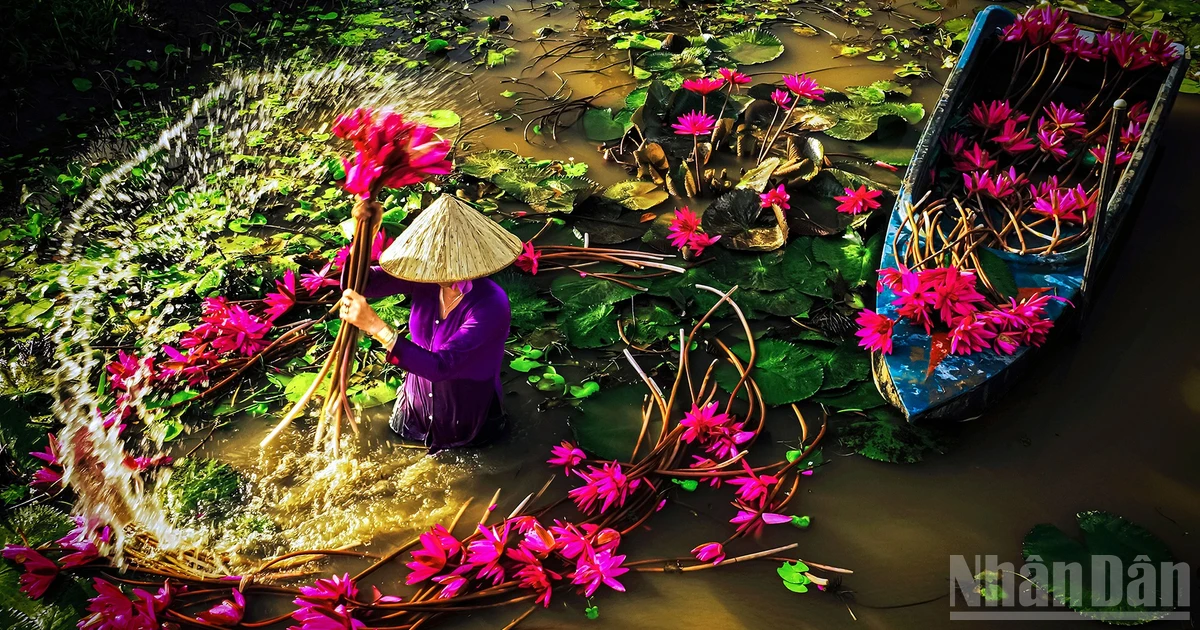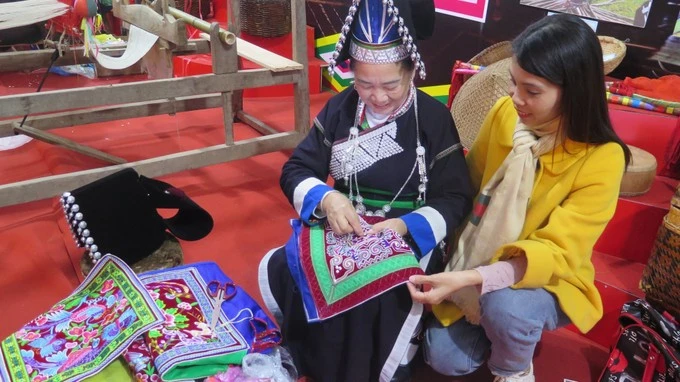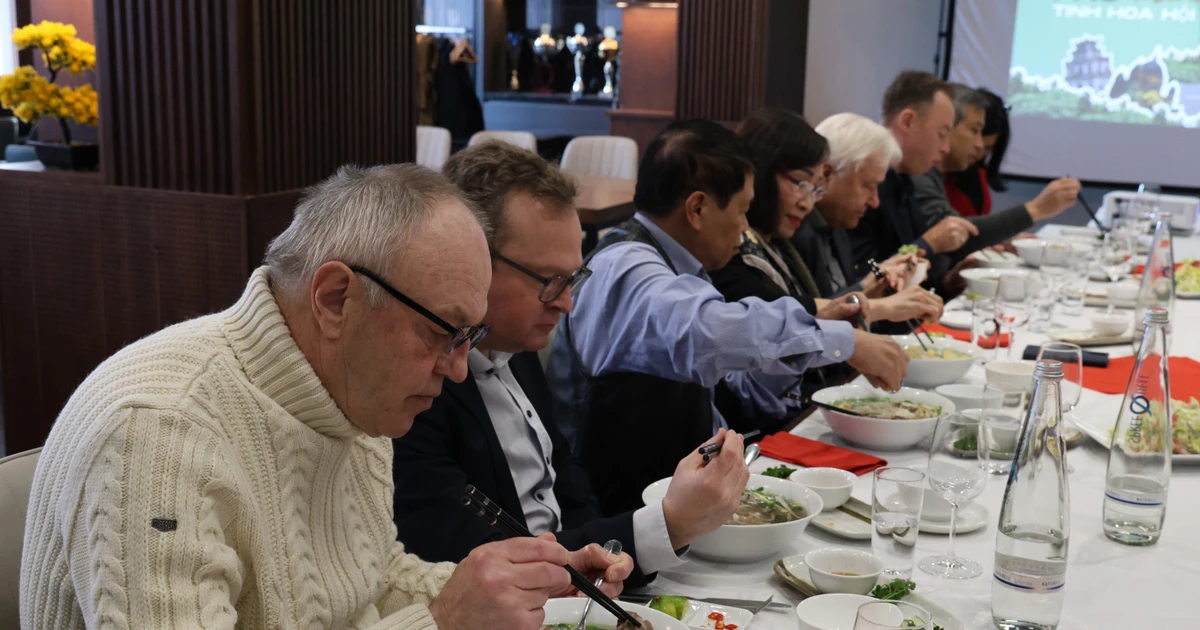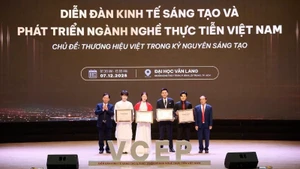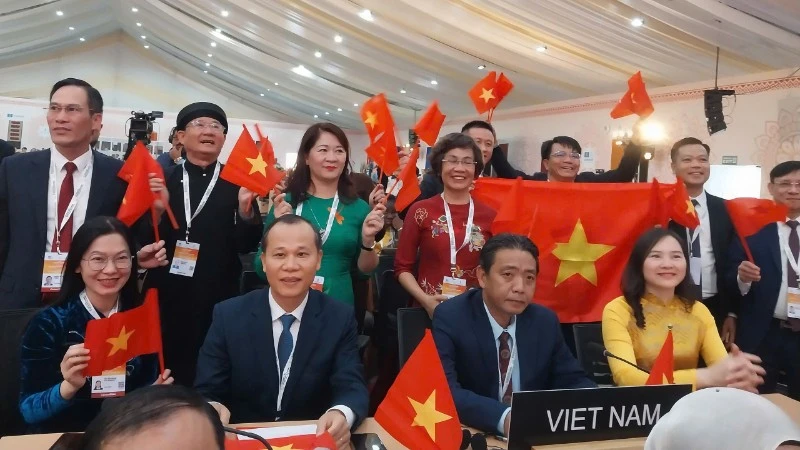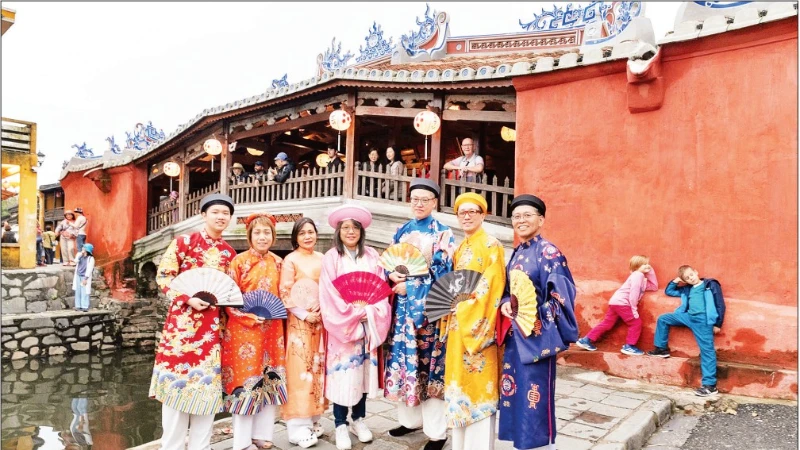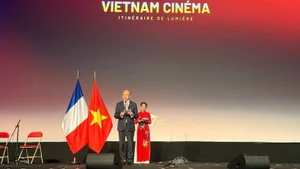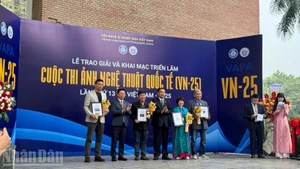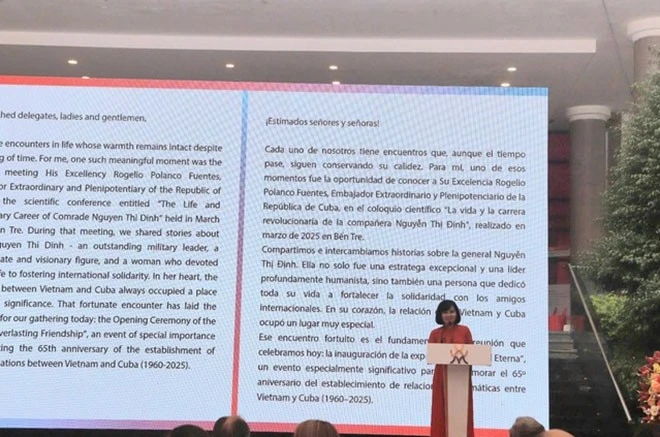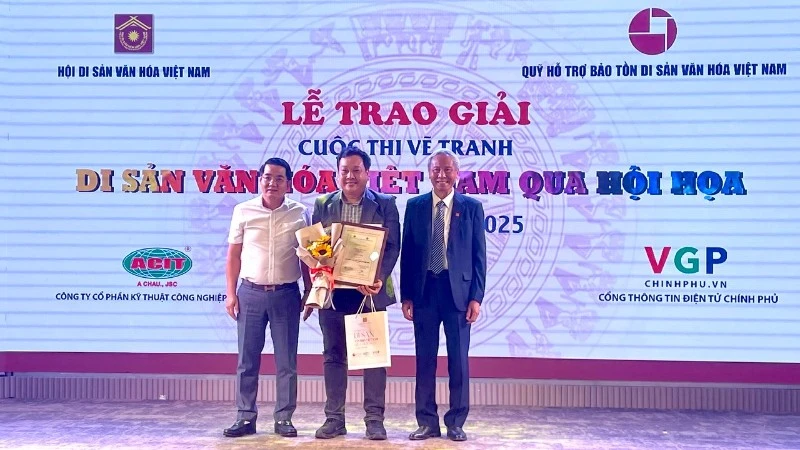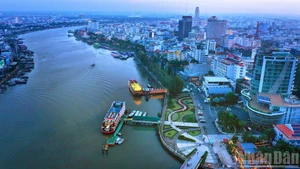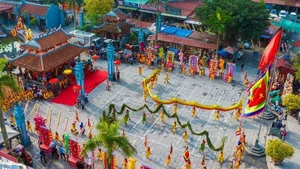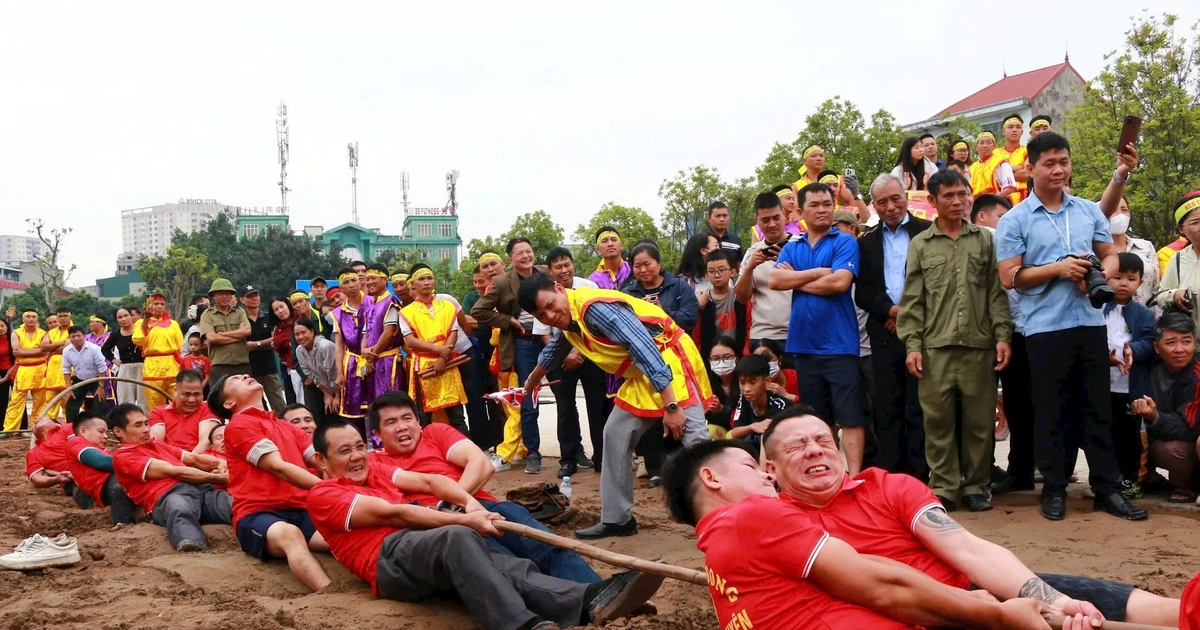Mo Muong rituals are always present at all important moments in the life of Muong ethnic people, from birth, adulthood to death. Mo is an “encyclopaedia” of Muong people.
Including many unique values
Shaman Nguyen Dinh Duong (from Yen Thang Village, Ngoc Trung Commune, Ngoc Lac District, Thanh Hoa Province) has taught 20 young people about Mo Muong for free. The 83-year-old shaman still has a strong voice and radiant eyes. He not only explained the specific Mo pieces but also talked about ancient stories and legends. They are the epic about the formation of the world and the birth of all species by Muong ethnic people.
Duong is the fifth generation of shamans in his family. He said: “Society used to turn away from Mo Muong because of misunderstandings that it was superstition. I could not have imagined that this day would come. Students in my class are of many ages and different occupations, which shows that many people are interested in Mo Muong. I am old, so I try to pass on all I know to younger generations. Importantly, if young people understand the history and stories of the ancestors, Mo Muong will be preserved”.
Thanh Hoa has about 400,000 Muong people living mainly in 11 mountainous districts. Although Mo Muong has experienced different historical ups and downs, shaman Nguyen Dinh Duong is one of 184 shamans still holding the Mo Muong heritage. In addition, nearly 100 people are students learning about this folk rite.
Mo Muong rituals are always present at all important moments in the life of Muong ethnic people, from birth, adulthood to death. Mo is an “encyclopaedia” of Muong people.
Muong ethnic minority people in Thanh Hoa and Hoa Binh Provinces have a close relationship. Many Muong people in Hoa Binh migrated to Thanh Hoa. Hoa Binh is the cradle of Muong culture, gathering four famous Muong areas including Muong Bi, Muong Vang, Muong Thang and Muong Dong (corresponding to present-day districts of Tan Lac, Lac Son, Cao Phong and Kim Boi).
Head of Cultural Management Office under the Hoa Binh Provincial Department of Culture, Sports and Tourism Bui Kim Phuc said: “Mo Muong is an important factor that forms the character and soul as well as the culture and history of Muong ethnic group in Hoa Binh. In the past, Mo Muong was practised in 23 rituals of Muong people including funeral, rituals praying for blessings, rituals worshiping human souls and rituals of exorcism. Despite many difficulties, there are still 190 shamans in Hoa Binh Province”.
In the past, many people believed that Mo Muong was the profession of shamans in rituals, mainly related to the human lifecycle. However, today, scientists assessed that this is a special form of cultural heritage. Mo Muong consists of three main components: Mo words and performance, performance environment, and people practising the rites (shamans).
In terms of heritage perspective, Mo Muong contains the values of many types of folklore including literature, performance, music, dance, theatre, beliefs, and folk knowledge. Specifically, Mo words are literary works with a huge capacity that feature human, cultural and historical values as well as outlook on life and cosmology. This is the "folk encyclopaedia" of the Muong ethnic group as all in Muong people are reflected in Mo Muong. There are many different types of Mo such as Mo Ke Chuyen (Story-telling Mo), Mo Nghi Le (Ceremonial Mo) and Mo nhom (scene description).
Mo Muong’ is now practised in seven cities and provinces across the country, including Ninh Binh, Phu Tho, Hanoi, Dak Lak, Son La, Thanh Hoa, and Hoa Binh. In Hanoi, Mo Muong in three districts of Thach That, Ba Vi, and Quoc Oai, has been inscribed on the list of the national intangible cultural heritage. There are not many shamans in Hanoi, but some are very young, such as Dinh Xuan Nam from Tien Xuan Commune, Thach That District.
Shaman Dinh Xuan Nam will turn 30 years old this year. From when he was very young, he witnessed the scene of his grandfather practising Mo rites and he soon memorised Mo words. In the early days of this year, Nam has been very busy with families inviting him to rituals to pray for peace and luckiness.
He said: “Understanding about Mo Muong, people will see that Mo words not only have historical values but also humanistic and educational significance. I am attached to Mo Muong because not only it is my career but also thanks to its beautiful meanings”.
Urgent measures for preservation of Mo Muong
The values of Mo Muong have been affirmed. However, in fact, the practice and preservation of the unique cultural values of Mo Muong has been gradually shrinking and in danger of disappearing.
There are two main reasons for this change, firstly a long interruption as it was misunderstood as superstition, and the lack of practice environment for folk artisans. The second is the change in lifestyle and activities of the Muong people themselves.
Head of Heritage Management Office under the Hanoi Municipal Department of Culture and Sports Pham Thi Lan Anh said that funeral is the environment for the practice of Mo Muong in the most vivid manner but consists of the most rites that prolong the funeral. This is not suitable for the new cultural lifestyle, so the adjustments are necessary during the development of civilised and progressive rituals. However, a number of local officials were not fully aware, so they have cut too many rites, negatively affecting the preservation of mo Muong.
According to a survey by Hoa Binh Province’s cultural sector, about 25% of local people are not interested in the values of Mo Muong. The training and teaching of Mo Muong in the province faces many difficulties.
According to Vice Chairman of Hoa Binh Provincial People’s Committee Nguyen Van Toan, the province focused on inventorying, collecting, synthesising, and keeping the full values and contents and has promptly overcome the risk of extinction.
Artisan Quach Van Dao from Sao Bay Commune, Kim Boi District, Hoa Binh Province, said there are only 18 artisans in the district. Several young people know about Mo Muong, but very few of them understand or are interested in this heritage.
In 2020, the Prime Minister directed the development of dossier for UNESCO recognition of Mo Muong as an intangible cultural heritage in need of urgent protection. Specifically, Hoa Binh is the host taking main responsibility and other localities take the roles as coordinators.
In recent years, the localities have carried out many measures to preserve Mo Muong. Hoa Binh Province has accelerated the implementation of the project on “preserving and promoting the values of Mo Muong cultural heritage in Hoa Binh during 2019-2025 period and the following years”. Accordingly, the local authorities have studied and included Mo Muong into the curriculum at schools and educational institutions as well as opened classes to teach basic Mo Muong rites and propagated widely among all classes of people.
According to Vice Chairman of Hoa Binh Provincial People’s Committee Nguyen Van Toan, the province focused on inventorying, collecting, synthesising, and keeping the full values and contents and has promptly overcome the risk of extinction. In addition, measures have been promoted to raise awareness and responsibility regarding effective preservation and promotion of the heritage’s values in all social aspects among the community and agencies at all levels, he added. The province has been coordinating with other units to develop the dossier on Mo Muong heritage in a scientific manner and it is expected to be completed in August 2023.
Other localities such as Hanoi, Ninh Binh and Thanh Hoa, have been enhancing many measures to preserve and promote the values of Mo Muong. In particular, Hanoi has been conducting inventory and propaganda to raise public awareness of Mo Muong as well as issuing appropriate policies to support artisans. However, the preservation of Mo Muong still faces many difficulties and needs to be done urgently.
Director of Thanh Hoa Provincial Department of Culture, Sports and Tourism Pham Nguyen Hong noted that during the process of preservation and promotion of the values of Mo Muong in Thanh Hoa as well as all localities in general, it is crucial to record the Mo words and performances to create documents for research and restoration. In addition, Mo Muong rites should be included in cultural and artistic activities in the localities, especially those related to awareness education, ethics, family and community relationships, and environmental protection. Several contents of Mo Muong need to be involved in the extracurricular programme to encourage young generations to learn about this unique heritage.
